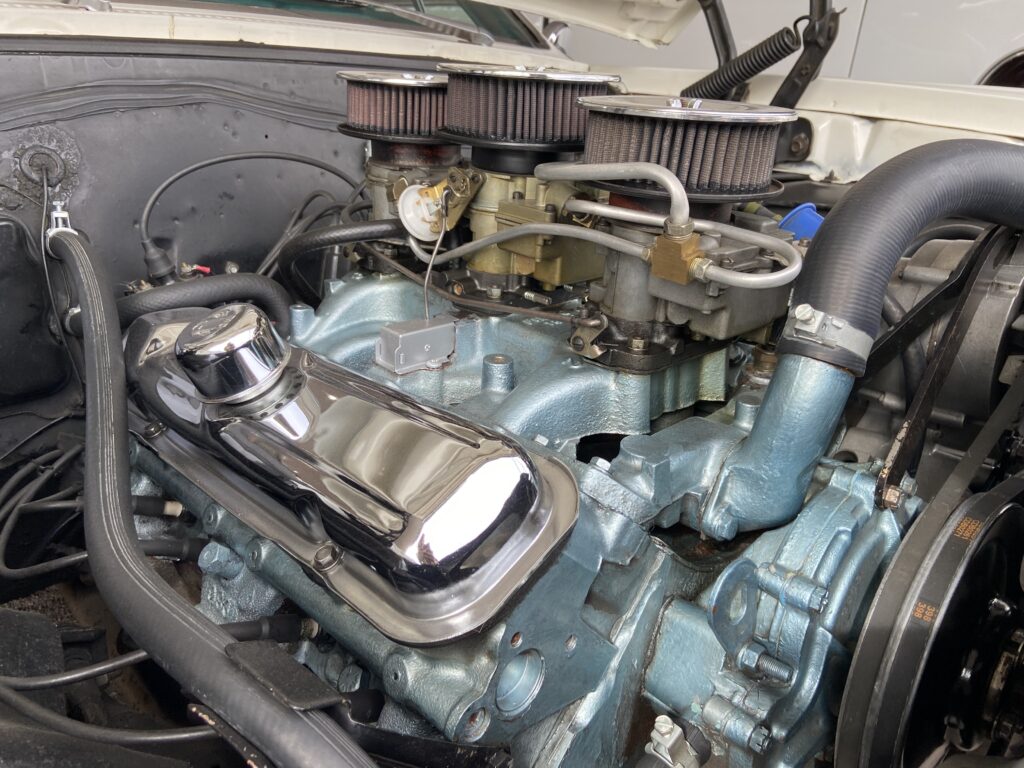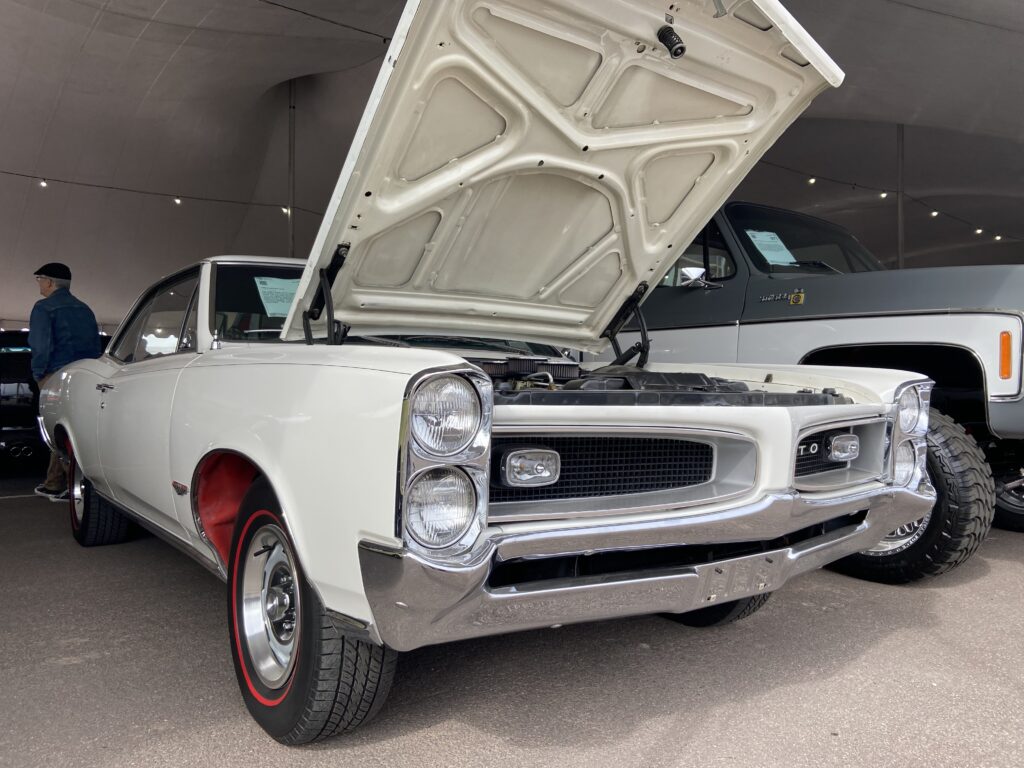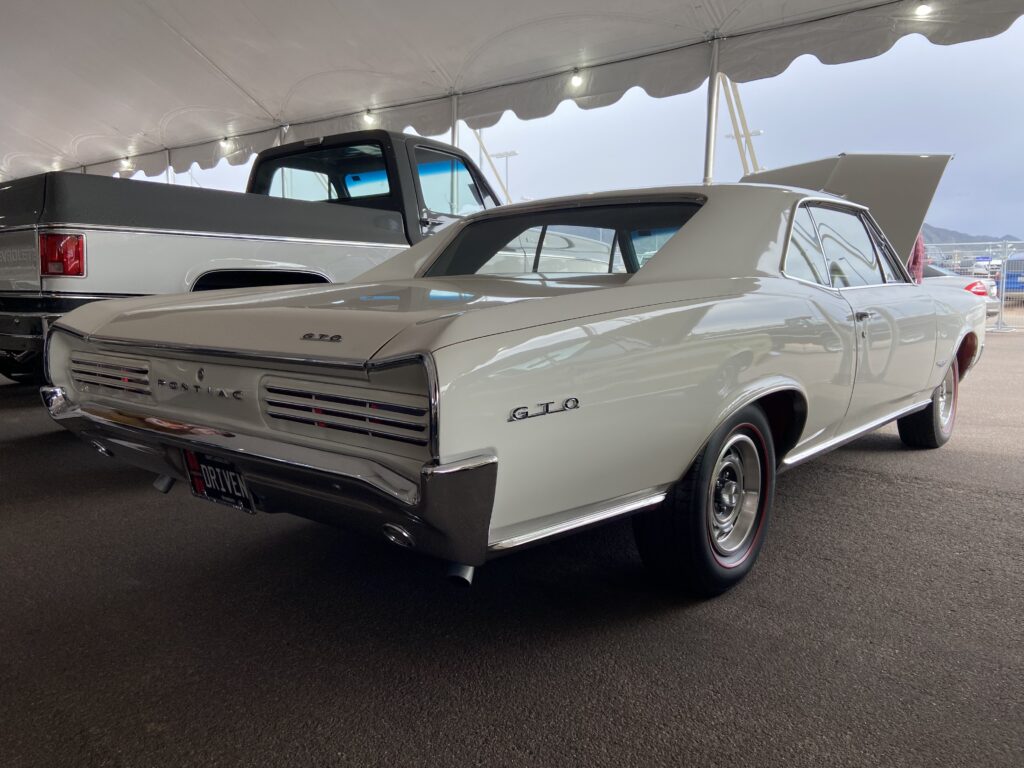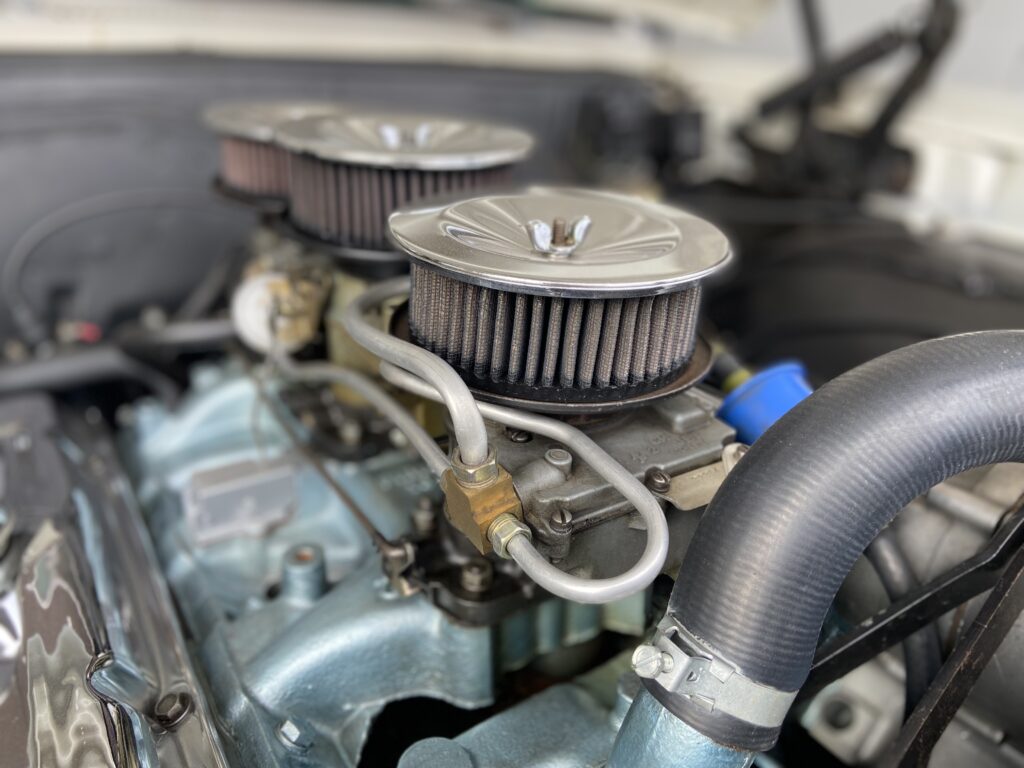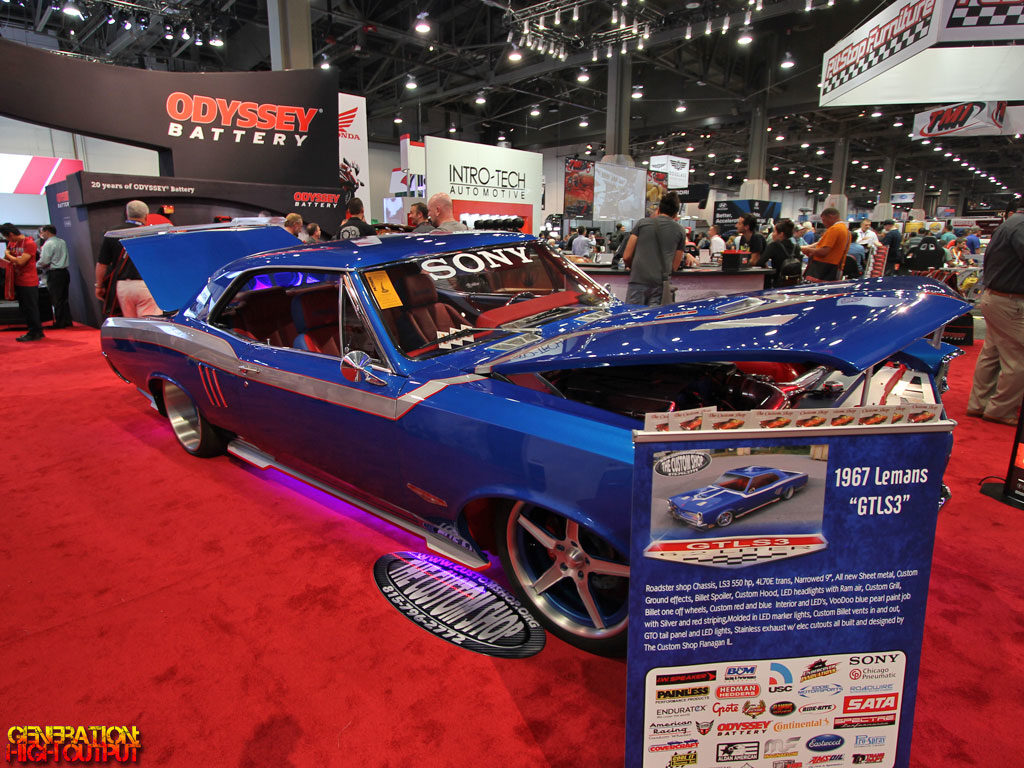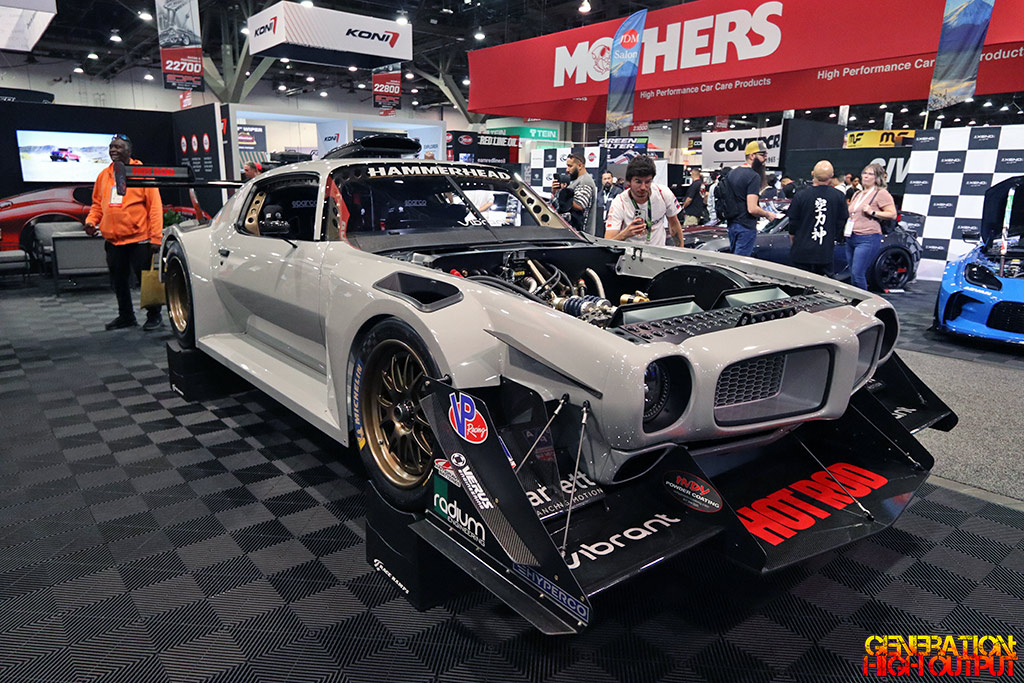 With more than 2,000 vehicles on display, the 2024 SEMA Show in Las Vegas was a sea of custom builds and cutting-edge performance machines. One car stood out at the Hot Rod magazine booth in the Central Hall, not just for its aggressive styling, but for the sheer audacity of its engineering. Plus, it’s nickname is “Hammerhead,” so there’s no way I could not write about this car.
With more than 2,000 vehicles on display, the 2024 SEMA Show in Las Vegas was a sea of custom builds and cutting-edge performance machines. One car stood out at the Hot Rod magazine booth in the Central Hall, not just for its aggressive styling, but for the sheer audacity of its engineering. Plus, it’s nickname is “Hammerhead,” so there’s no way I could not write about this car.
This 1973 Pontiac Trans Am isn’t just another restomod car with an LS crate engine (and SEMA has plenty of those!), it is a complete re-imagination of what a classic American muscle car can be in the modern era. The Camerons set out to build the ultimate time attack machine, and from what I saw, they have set the bar extremely high.
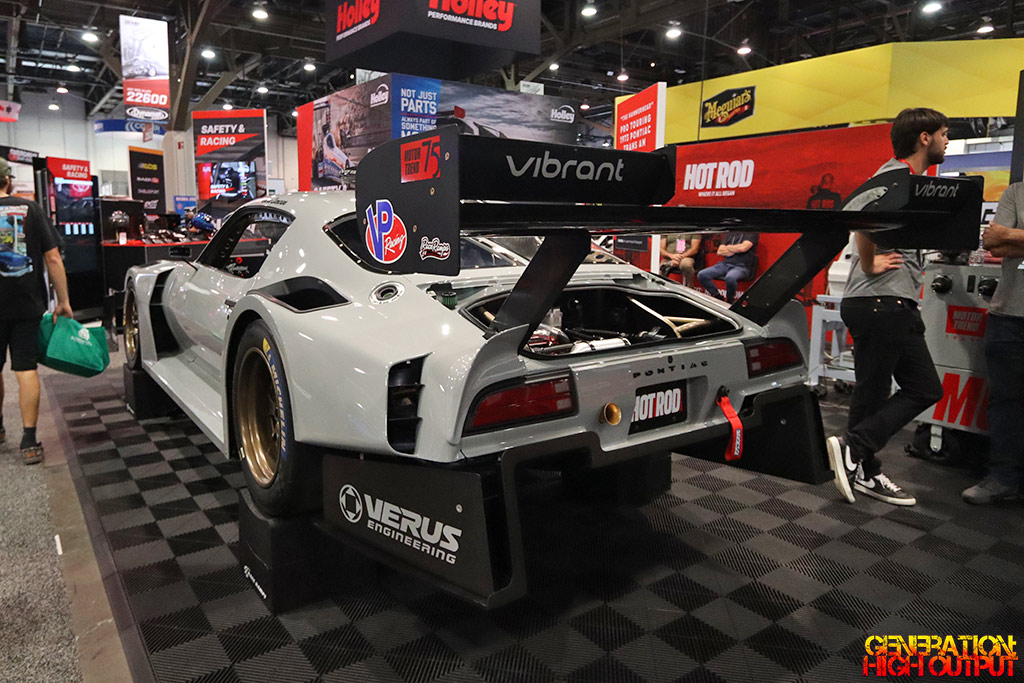
At the core of the Hammerhead lies a 400 cubic inch LSR V8 engine from Concept Performance, buried deep under the firewall and pushed 28 inches rearward from its factory position. This all-aluminum beast produces an eye-watering 1,800 horsepower and 1,200 lb-ft of torque, thanks to twin Garrett G35-900 turbochargers feeding a custom LME dual throttle body intake manifold. Fuel is delivered by high-flow Injector Dynamics ID1700 injectors, which ensures the 6.5-liter engine has adequate fuel when the pedal is mashed to the floor.
Backing that engine is a unique transmission: a Reynard Champ Car six-speed transaxle, originally sourced from a 2001 IndyCar. Shifts are handled by a Motec pneumatic paddle system, bringing F1-style responsiveness to the Trans Am platform, which is a sentence I never thought I would hear.
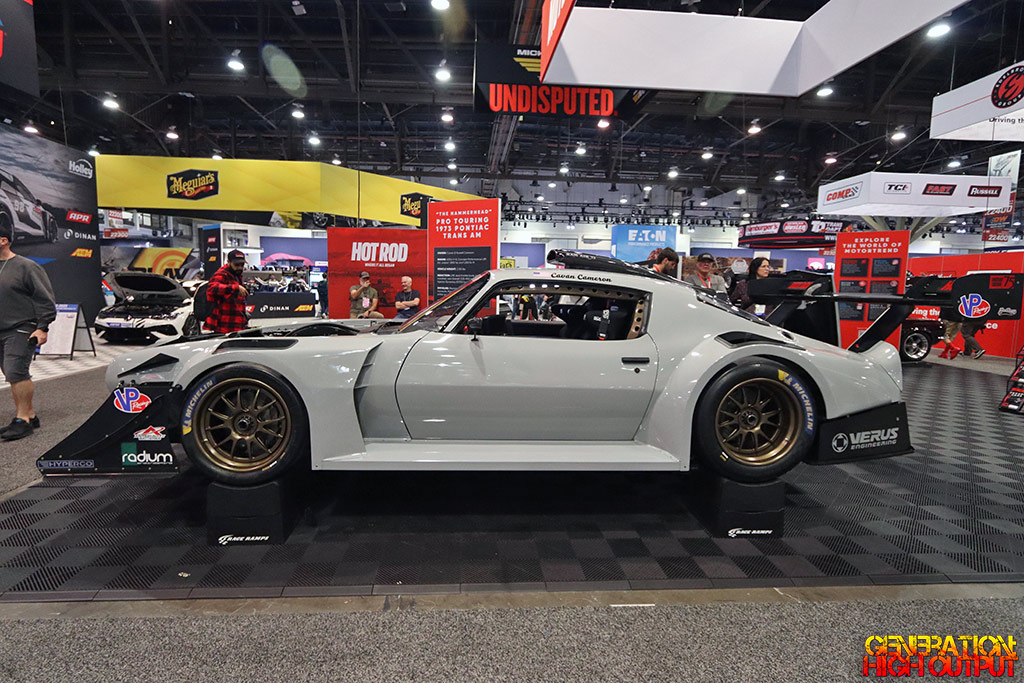
The Hammerhead rides on a full custom tube chassis from Horizon Motorsports, designed to handle the extreme forces of time attack racing. The driver and passenger seats have been relocated 8 inches rearward, helping the car achieve a finely tuned 47/53 front-to-rear weight distribution. Despite its giant engine and massive widebody kit, the car tips the scales at a surprisingly lean 3,100 lbs.
Visually, the Hammerhead is a lot to take in. Every body panel has been reworked for function and aggression, with only the cowl, roof, and original VIN tag remaining untouched. It’s almost a caricature of the Trans Am form, with the exaggerated wheel arches, massive front air dam, and mega wing in the rear. It looks every bit a race car, even standing still on the convention center floor.
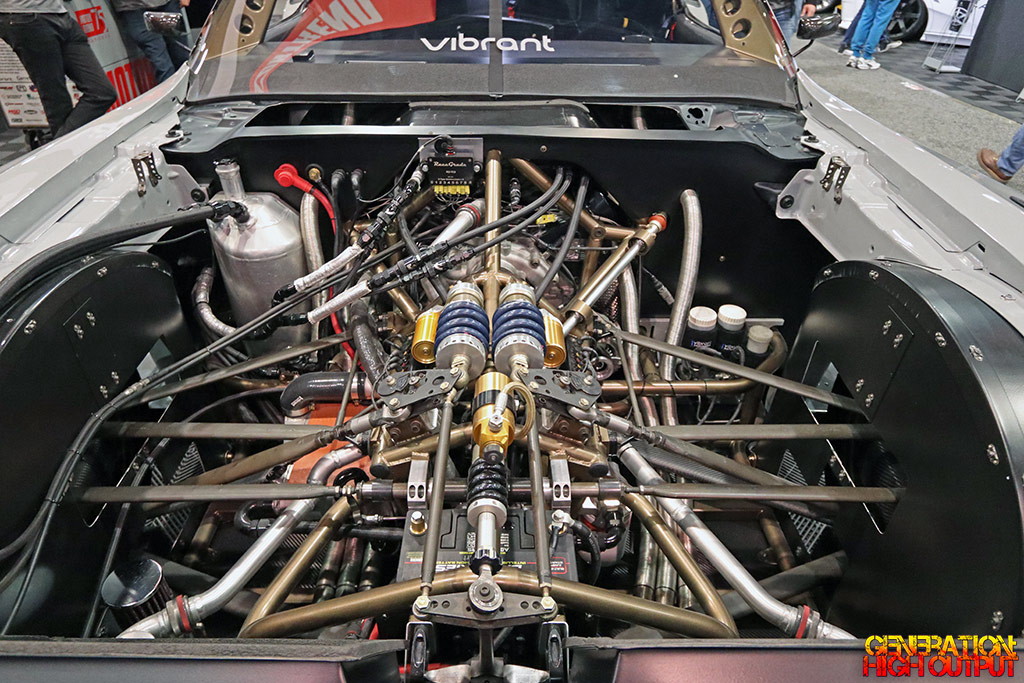 What I love about this car (besides the fact that it’s an F-body) is the story behind it. Cavan and Russell Cameron didn’t just build a car, they executed a vision. As a father and son team, they combined decades of experience and passion into a custom car that blends different generations of performance. At SEMA 2024, this car drew a lot of attention from passersby.
What I love about this car (besides the fact that it’s an F-body) is the story behind it. Cavan and Russell Cameron didn’t just build a car, they executed a vision. As a father and son team, they combined decades of experience and passion into a custom car that blends different generations of performance. At SEMA 2024, this car drew a lot of attention from passersby.
The 1973 Trans Am “Hammerhead” is more than just a showstopper. It’s a purpose-built track weapon that shows what’s possible when old-school muscle meets cutting-edge race technology.
For more, follow @horizon_motorsports_llc on Instagram.





